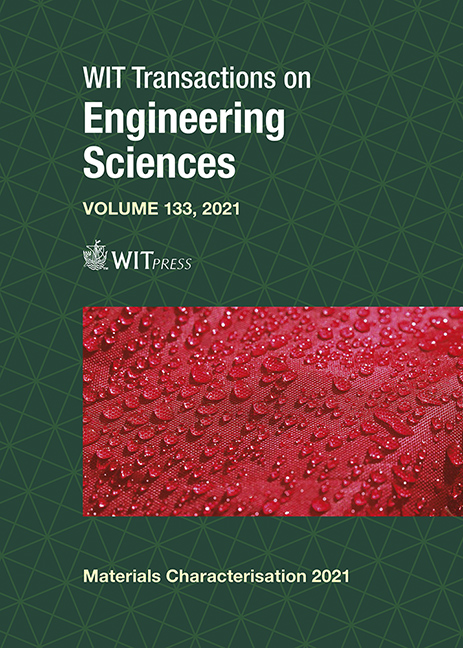COMPARISON OF BIOMASSES AS ADSORBENT MATERIALS FOR PHENOL REMOVAL
Price
Free (open access)
Transaction
Volume
133
Pages
7
Page Range
127 - 133
Published
2021
Paper DOI
10.2495/MC210141
Copyright
Author(s)
PUSHPA JHA
Abstract
India is a producer of a colossal number of biomasses with high quantity. Even after using them for energy generation, large proportions of residues remain unutilised. They could be utilised as an adsorbent-material to get rid of phenol from aqueous streams. Phenol is listed as highly toxic as per available databases. Thermo-chemical treatment methods have been widely reported to improve the characteristics of biomass-based adsorbents. In this work, based on the availability, three biomasses, Acacia Nilotica Branches (AC), Lantana Camera (LA) and Rice-Husk (RI), were given the treatment. The resulting activated forms of adsorbents were named activated Acacia Nilotica Branches (ACC), activated Lantana Camera (LAC) and activated Rice Husk (RIC). The materials obtained had a high content of fixed carbon, iodine number, BET surface area, and methylene blue adsorption. The operating parameters for sorption in terms of dosage, pH, time of contact, initial phenol concentration and agitation speed were optimised. At these conditions, the adsorption isotherms were compared, and they were explained by Langmuir, Freundlich, and Temkin models. LAC and RIC, respectively highest, followed sorption capacity of ACC. Kinetics of the process on adsorbents considered followed pseudo-first-order and pseudo-second-order models.
Keywords
acacia nilotica branches, adsorbent, adsorption isotherms, adsorption kinetics, adsorption parameters, biomass, characterisation, Lantana camera, rice-husk, phenol





